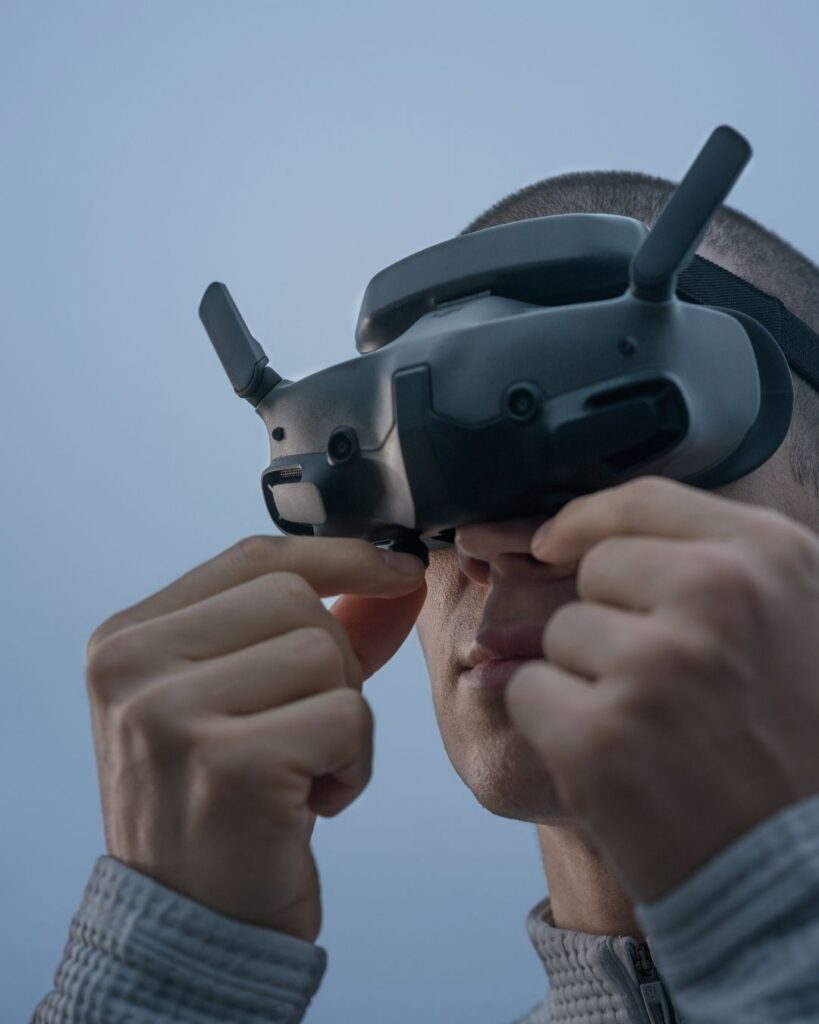
DJI Goggles 3 vs Goggles 2: What’s Changed and Which One to Choose?
DJI Goggles 3 are DJI’s latest generation FPV goggles, released last year. While they may look similar to the earlier Goggles 2 on the outside, several key updates make the Goggles 3 a significant step forward. In this review, we compare the two models, explain the main differences, and help you decide whether it’s worth upgrading or sticking with your current model.
Technical Specifications
| Features | DJI Goggles 3 | DJI Goggles 2 |
| Screen Size | 2 x 0.49″ OLED | 2 x 0.49″ OLED |
| Resolution | 1920×1080 | 1920×1080 |
| Refresh Rate | 100Hz | 100Hz |
| Video Transmission | 1080p @ 60/100fps | 1080p @ 60/100fps |
| Operating Frequency | 2.4 / 5.1 / 5.8 GHz | 2.4 / 5.8 GHz |
| Field of View (FOV) | 44° | 51° |
| Screen Zoom Adjustment | 50–100% | 50–100% |
| Focus Adjustment | -6.0 to +2.0 (with -8.0 lenses included) | -8.0 to +2.0 |
| IPD (Interpupillary Distance) | 56–72 mm | 56–72 mm |
| Battery | Integrated (7.2V, 3000mAh) | External (2S 1800mAh) |
| Weight | 470g | 290g |
| Price (approx.) | €659 | €599 |
Design and Comfort
Goggles 3 feature a redesigned, more comfortable front section – the face contact no longer presses directly against the nose and eyes, but instead rests on the forehead. This results in a lighter and less tiring experience during long flight sessions. The viewing angle can also be adjusted to reduce light leakage and improve the fit.
A major improvement is in the control system: instead of a touchpad, Goggles 3 use a physical joystick and button, making menu navigation more precise and intuitive. A new power button with battery level indicator has also been added – a helpful upgrade.
While the antennas are foldable, they are no longer removable, which means aftermarket antenna upgrades are not possible – a potential downside for some users.
Battery and Power
Goggles 3 include a built-in battery located at the back of the head, similar to a helmet strap. This makes the setup more streamlined and eliminates the need for an external battery pack. The capacity (21.6Wh) is higher than that of Goggles 2, but this also increases the overall weight. One charge provides up to 3 hours of use, and fast charging via USB-C takes about 1 to 1.5 hours.
Additionally, Goggles 3 support external USB-C power, so a power bank can be used for extended sessions.
Image and Focus
The screen size, resolution, and refresh rate remain the same, but the field of view differs: Goggles 2 offer 51°, while Goggles 3 use a narrower 44° FOV. Despite the lower number, many users find this beneficial – the wider field on Goggles 2 often caused blurry edges, requiring manual reduction anyway. Goggles 3 deliver a clearer and more focused viewing experience.
Focus adjustment range is slightly narrower by default on Goggles 3, but DJI includes -2.0 diopter lenses to compensate, allowing a similar experience.
Real-time View and New Features
One standout feature of Goggles 3 is Real-time Live View – two forward-facing cameras allow you to see your surroundings with a double tap, without removing the goggles. While useful in theory, its practical value is limited – the 720p image and narrow field don’t add much. However, 3D viewing and Picture-in-Picture mode are available, showing both real-world view and drone footage at once.
OcuSync 4.0 – A New Transmission System
The biggest technical leap in Goggles 3 is the new OcuSync 4.0 video and control transmission, offering:
- Lower latency (24ms vs. previous 30ms)
- Higher data rate (60Mbps vs. 50Mbps)
- Greater range (up to 13 km vs. 10 km)
OcuSync 4.0 is currently exclusive to Goggles 3, making them much more future-proof compared to Goggles 2, which is limited to OcuSync 3.0.
Conclusion: Which One to Choose?
If you’re already using Goggles 2 and mainly fly with DJI’s O3 system, upgrading might not be essential. However, if you’re looking for the latest technology, longer battery life, enhanced comfort, and support for future systems like OcuSync 5, Goggles 3 is the clear choice.
Goggles 2 remains a solid option – especially if you find a good deal on the second-hand market. But keep in mind that DJI is clearly focusing on the new model, and Goggles 3 offer the best compatibility with upcoming Air Units.u piedāvājumu lietotu preču tirgū. Taču paturiet prātā, ka DJI nepārprotami koncentrējas uz jauno modeli, un Goggles 3 piedāvā vislabāko saderību ar gaidāmajām Air Units.
Order goggles here:
DJI Goggles 3
🔎DJI Goggles 3 brilles – Droni.lv
DJI Goggles 2
🔎DJI Goggles 2 brilles – Droni.lv
For more info read here –
🔎DJI Goggles 3 – Immersive FPV Experience- DJI

